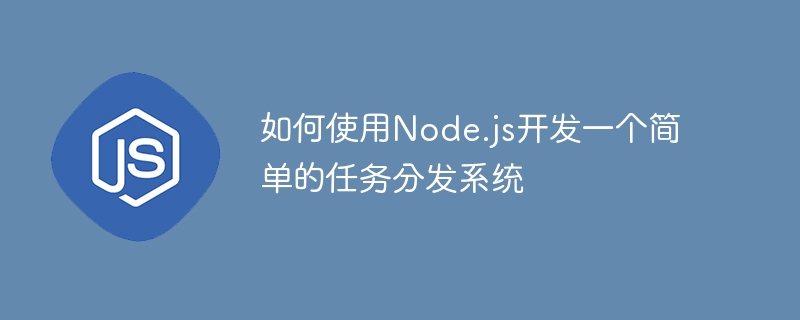

How to use Node.js to develop a simple task distribution system
Introduction
In modern software development, task distribution systems are very common and important a component. It can distribute tasks to different worker nodes to achieve parallel processing and improve system efficiency. This article will introduce how to use Node.js to develop a simple task distribution system and provide specific code examples.
1.1 Task Distributor
The task distributor is responsible for receiving tasks and distributing tasks to worker nodes. It needs to provide the following functions:
1.2 Worker Node
Worker nodes are responsible for executing tasks. It needs to provide the following functions:
2.1 Create a task distributor
First, we need to create a task distributor module. In the task distributor module, we can define interfaces to receive task requests and use load balancing algorithms to select worker nodes. The following is a simple sample code:
const express = require('express');
const app = express();
app.use(express.json());
// 接收任务请求
app.post('/task', (req, res) => {
const { taskId, payload } = req.body;
// 使用负载均衡算法选择工作节点
const selectedNode = selectNode();
// 将任务分发给工作节点
sendTask(selectedNode, taskId, payload);
res.status(200).send('Task has been dispatched.');
});
app.listen(3000, () => {
console.log('Task dispatcher is running on port 3000.');
});2.2 Create a worker node
Next, we need to create the module of the worker node. In the worker node module, we can define interfaces to receive tasks and execute task logic. After completing the task, the worker node needs to feedback the task results to the task distributor. The following is a simple sample code:
const express = require('express');
const app = express();
app.use(express.json());
// 注册到任务分发者
app.post('/register', (req, res) => {
const { nodeId } = req.body;
// 注册到任务分发者
registerNode(nodeId);
res.status(200).send('Node has been registered.');
});
// 接收任务
app.post('/task', (req, res) => {
const { taskId, payload } = req.body;
// 执行任务逻辑
const result = executeTask(taskId, payload);
// 反馈任务结果
sendTaskResult(taskId, result);
res.status(200).send('Task has been completed.');
});
app.listen(4000, () => {
console.log('Worker node is running on port 4000.');
});The above is the detailed content of How to develop a simple task distribution system using Node.js. For more information, please follow other related articles on the PHP Chinese website!